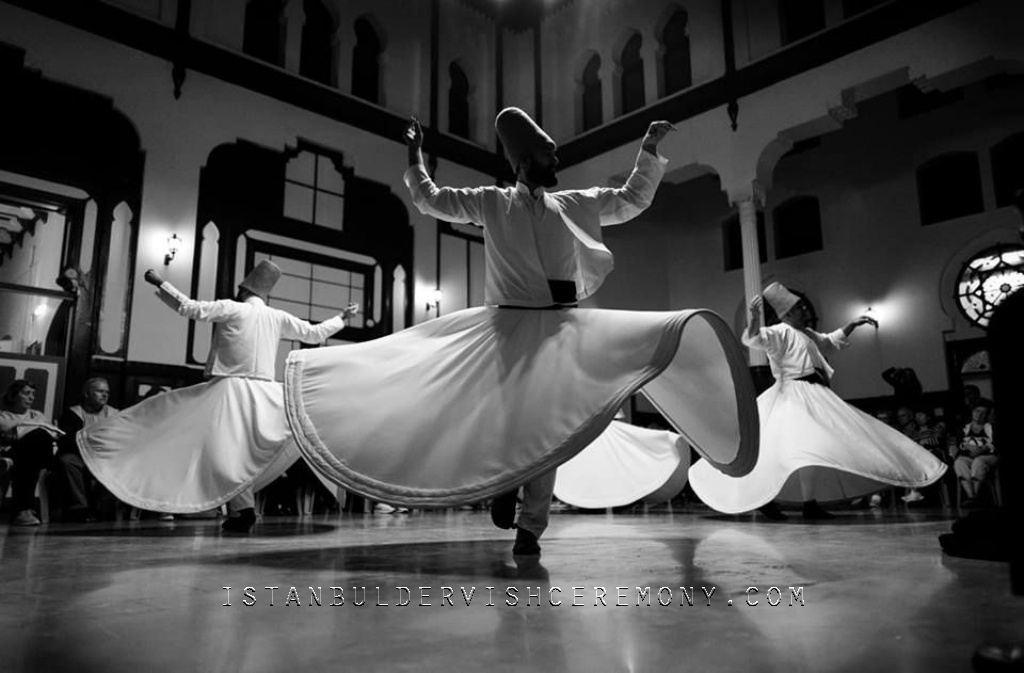Sufi Whirling in Istanbul
Sufi Whirling in Istanbul or Sufi turning Turkish: Semazen is a form of physically active meditation which originated among certain Sufi groups, and which is still practiced the Sufi Dervishes of the Mevlevi order and other orders such as the Rifa’i-Marufi. It is a customary meditation practice performed within the Sema, or worship ceremony, through which dervishes aim to reach the source of all perfection, or karma. This is sought through abandoning one’s nafs, ego or personal desires, listening to the music, focusing on God, and spinning one’s body in repetitive circles, which has been seen as a symbolic imitation of planets in the Solar System orbiting the sun.
The Mevlevi practice gave rise to an Egyptian form, tanoura, distinguished the use of a multicolored skirt. This has also developed into a performance dance non-Sufis, including dancers outside the Islamic world.
The whirling dervishes were founded Jelaluddin Rumi (1207-1273)
“In the 12th century, Sufi fraternities were first organized as an established leadership in which a member followed a prescribed discipline in service to a sheikh or master in order to establish rapport with him.” A member of such a fraternity is referred to as a Persian darwish. These turuk – tariqa were responsible for organizing an Islamic expression of religious life, often founded independent saints or resulted from the division of existing orders. Each Sufi tariqa stems from a unique silsila, or “chain of order” in which a member must learn, as the silsila binds each member to Allah through one’s chain of order. One’s silsila extends through the member’s individual teacher, to their teacher and so on, through time until one is connected to the Prophet and thus Allah.The Prophet himself is revered as the originator of Sufism, which has in turn been traced down through a series of saints.
A dervish practices multiple rituals, the primary of which is the dhikr, a remembering of Allah. The dhikr involves recitation of devotional Islamic prayer. This dhikr is coupled with physical exertions of movement, specifically dancing and whirling, in order to reach a state assumed outsiders to be one of “ecstatic trances”.
In the symbolism of the Sema ritual, the semazen’s camel’s hair hat (sikke) represents the tombstone of the ego; his wide, white skirt (tennure) represents the ego’s shroud. By removing his black cloak (hırka), he is spiritually reborn to the truth. At the beginning of the Sema, holding his arms crosswise, the semazen appears to represent the number one, thus testifying to god’s unity. While whirling, his arms are open: his right arm is directed to the sky, ready to receive god’s beneficence; his left hand, upon which his eyes are fastened, is turned toward the earth. The semazen conveys god’s spiritual gift to those who are witnessing the Sema. Revolving from right to left around the heart, the semazen embraces all humanity with love. The human being has been created with love in order to love. Mevlâna Jalâluddîn Rumi says, “All loves are a bridge to Divine love. Yet, those who have not had a taste of it do not know!”
Among the Mevlevi order, the practice of dhikr is performed in a traditional dress: a tennure, a sleeveless white frock, the destegul, a long sleeved jacket, a belt, and a black overcoat or khirqa to be removed before the whirling begins. As the ritual dance begins, the dervish dons a felt cap, a sikke, in addition to a turban wrapped around the head, a trademark of the Mevlevi order.The sheikh leads the ritual with strict regulations. To begin,
The sheikh stands in the most honored corner of the dancing place, and the dervishes pass him three times, each time exchanging greetings, until the circling movement starts. The rotation itself is on the left foot, the center of the rotation being the ball of the left foot and the whole surface of the foot staying in contact with the floor. The impetus for the rotation is provided the right foot, in a full 360-degree step. If a dervish should become too enraptured, another Sufi, who is in charge of the orderly performance, will gently touch his frock in order to curb his movement, The dance of the dervishes is one of the most impressive features of the mystical life in Islam, and the music accompanying it is of exquisite beauty, beginning with the great hymn in honor of the Prophet and ending with short, enthusiastic songs, some things sung in Turkish.
The Western world, having witnessed Sufi whirling through tourism, have described the various forms of dhikr as “barking, howling, dancing, etc.”The practice of each tariqa is unique to its individual order, specific traditions and customs may differ across countries. The same tariqa in one country will not mirror that of another country as each order’s ritual stresses “emotional religious life” in various forms. The Mevleviyah order, like many others, practice the dhikr performing a whirling meditation. Accompanying the dhikr practices of whirling and prayer, the custom of sama serves to further one’s “nourishment of the soul” through devotional “hearing” of the “‘subtle’ sounds of the hidden world or of the cosmos.”In contrast to the use of sama, whirling and devotional prayer in the practice of dhikr, the tariqa orders perform Sufi whirling in addition to playing musical instruments, consuming glowing embers, live scorpions and glass, puncturing body parts with needles and spikes, or practicing clairvoyance and levitation. The dervish practice can be performed community residents or lay members, members have typically been those of lower classes. Within Islamic faith, unlike Middle Eastern law, women have equal status to men, allowing women to participate in dhikr as dervishes themselves. Women were received into a tariqa order a male sheikh, but traditionally were instructed to practice the dhikr alone or with an established branch of females within a specific order. Sufi whirling, a worship of dhikr, became a gender and class neutral practice throughout the Central Islamic region.
The custom of sama among Sufi orders has a history of controversy within the Islamic faith. In one argument, the use of the term sama is considered to suggest physically “listening” in a spiritual context. A differing opinion argues that sama is in fact “hearing”, as “to hear” can pertain to any sound in addition to any “subtle” sounds of the spiritual realm. Those in support of sama further claim that the term is actually synonymous with “understanding” and therefore recognition and application of the Revelation as well as the act of “attaining higher knowledge.” The spread of sama among Sufi orders began some time around the mid 3rd/9th century C.E. in Baghdad, eventually finding acceptance and favor in Persian, Turkish and Indian Islam. The custom of sama evolved in practice over time as it complemented Sufi dhkir, whirling and among some orders dancing and a meal. Rules of propriety and conditions were adopted upon the widespread concern surrounding the necessity of sama with the dhikr; in order to distinguish between entertainment and valuable spiritual practice, the sama was distinguished as heard from the ego, heart or spirit. Despite the application of rules, some sheikhs continued to limit or disapprove the practice of sama. While controversy continuously questioned the place of sama in Sufi orders, the music itself was not affected. More recently, the custom of sama is most commonly performed within a dhikr ceremony. Those in support of sama continue to argue that “according to that which it is not sama and dance which induce ecstasy, but ecstasy which arouses dance, or furthermore, that sama is only a revealing instrument and that it only supplies that which is brought to it the hearer.”
In 2005, UNESCO proclaimed the “Mevlevi Sema Ceremony” of Turkey as one of the Masterpieces of the Oral and Intangible Heritage of Humanity.
Sema ceremony at Sirkeci Railway Station, Istanbul
Dervish communities, in the Middle Ages, served a central role in social, religious and political life throughout “central Islamic lands.” Dervish orders were at one time much larger in size than they are today.
While only men have historically been permitted to take part in the ceremony, some communities now allow women to participate
Guinness World Records for “most Sufi whirls in one hour” were awarded in London in 2012, to Shafik Ibrahim Abd El Hamed in the male category with 2,905 rotations, and Tara Lee Oakley in the female category with 2,191.These records were surpassed in Zurich in 2015 Nicole McLaren, with 3,552 rotations.
The longest continuous whirling performance has been recorded at more than four hours.[citation needed] The most people simultaneously whirling is 755, set in Taiwan in 2011
How can one participate?
You can make reservations from here ( online ), you can e-mail us or you can visit our ticket center in advanced and make your reservation in person. Here are our details ;
LOCATION of our Meeting Point in Sultanahmet :
https://goo.gl/maps/uXuyRmELZsx
Contact People : Mr. Alp – Mr. Nurdogan
( Phone : +90 544 220 10 22 / +90 212 527 68 59 )
Here is our address :
Google Maps : https://goo.gl/maps/uXuyRmELZsx
Istanbul Dervish Ceremony – Les Arts Turcs / Culture Center
Alemdar Mh. Incili Çavus St.
No: 19 Floor : 3 (Behind The Underground Cistern)
Sultanahmet 34400
Istanbul, Turkey
-
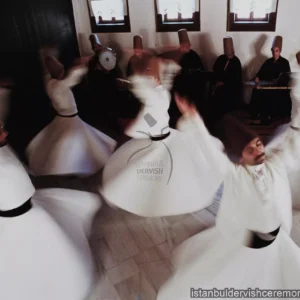 Whirling Dervish Ceremony in Sultanahmet950.00₺
Whirling Dervish Ceremony in Sultanahmet950.00₺ -
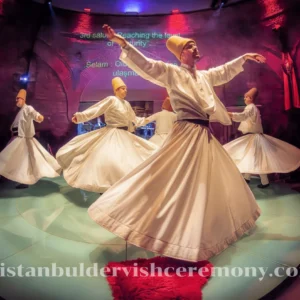 Hocapasha Culture Center Whirling Dervish Ceremony1,580.00₺
Hocapasha Culture Center Whirling Dervish Ceremony1,580.00₺ -
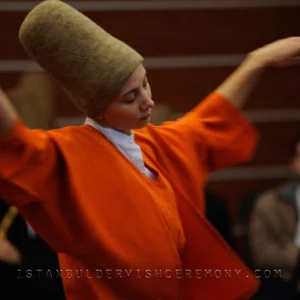 Whirling Dervish Ceremony Real Monastery in Fatih1,890.00₺
Whirling Dervish Ceremony Real Monastery in Fatih1,890.00₺ -
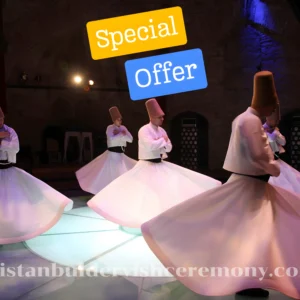 Hocapasha Culture Center Whirling Dervish Ceremony Happy Hour Ticket1,000.00₺
Hocapasha Culture Center Whirling Dervish Ceremony Happy Hour Ticket1,000.00₺ -
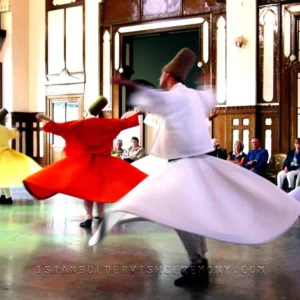 Whirling Dervish Ceremony in Sultanahmet Sirkeci Train Station200.00₺
Whirling Dervish Ceremony in Sultanahmet Sirkeci Train Station200.00₺ -
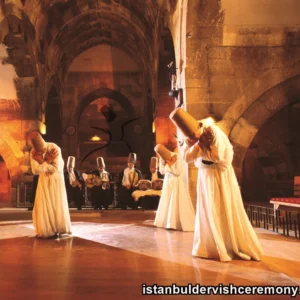 Whirling Dervish Ceremony in Saruhan Cappadocia1,680.00₺
Whirling Dervish Ceremony in Saruhan Cappadocia1,680.00₺ -
 Semazen Töreni – Sultanahmet950.00₺
Semazen Töreni – Sultanahmet950.00₺ -
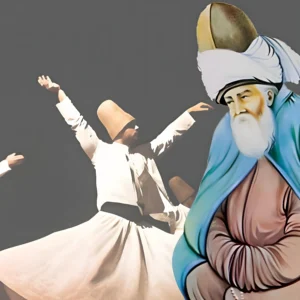 Seb-i Arus Rumi Ceremony in Istanbul1,890.00₺
Seb-i Arus Rumi Ceremony in Istanbul1,890.00₺ -
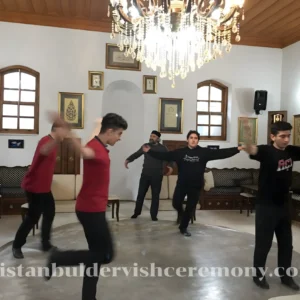 Learn How to do Sacred Whirling Dervish Dance4,600.00₺
Learn How to do Sacred Whirling Dervish Dance4,600.00₺
